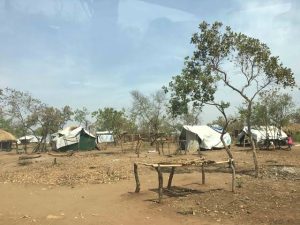STAKE HOLDERS TEAMUP TO BOOST UGANDA’S DAIRY SECTOR
4 min read
DAVID MWANJE
The Food and Agriculture Organization of the United Nations (FAO) concluded a round of regional and national policy dialogues with Uganda’s Dairy Development Authority (DDA) and key dairy stakeholders in a push to improve the country’s dairy sector.
Uganda’s dairy sector plays a vital role in household nutrition income levels. It represents 6.5% of the countries agricultural Gross Domestic Product (GDP). Dairy production is dominated by rural small-scale farmers with varying levels of quality and only around 20% of milk being processed into higher value products.
According to the DDA, Uganda’s revenue from export of dairy products has risen sharply, by 63% in three years (2018-2020). Dairy now accounts for accounts for 8% of total export value. The time is ripe to help the sector to reach its full potential.
In Uganda, the AgrInvest initiative of the Food and Agriculture Organization of the United Nations (FAO) and the European Union uses public funding to attract sustainable private investments and support improvements in key agrifood sectors such as dairy.
During the regional meetings, held in Mbarara and Wakiso, FAO officials presented the results of four economic and policy studies that highlight a range of issues in the dairy value chain.
Martin Maugustini, AgrInvest Uganda Project Coordinator said that the AgrInvest Project in Uganda supports existing Policy Dialogue Platforms, or at least platforms in the making, in partnership with key stakeholders and these platforms enable public and private dairy value chain stakeholders to strengthen their voice, articulate their investment needs and take the advantage of economies of scale by working together. “Such collective action can boost the commercial dairy sector,” he added.
“These dialogue platforms also aim to identify possible investment opportunities for investors, such as the Ugandan Development Bank (UDB) with whom AgrInvest is partnering with” he said.
The studies included analyses on price incentives for milk producers and traders, on the performance of the Milk Collection Centres (MCC), on post-harvest loss in the milk and dairy sector, and on domestic dairy consumption in Uganda.
In the East African Community, Uganda ranks third in milk consumption, behind Kenya and the United Republic of Tanzania, with each Ugandan consuming 64 litres per year on average. In comparison, the recommended intake by World Health Organization and FAO is around 200 litres.
Thibault Meilland, Economist and Policy Advisor with the FAO Monitoring and Analysing Food and Agricultural Policies (MAFAP) programme said that Milk is a vital source of nutrition and many Ugandan farming households get their income from the sale of milk and dairy products and through this package of policy studies, stakeholder dialogues and the action plan devised today, Uganda has access to strong evidence on the reforms the dairy value chain needs and the strategic targets for future investments.
“This will ultimately make milk producers better off with higher incomes, better milk-handling practices along the value chain, and better-quality milk and dairy products for local consumers and export markets,” he added.
On milk prices, FAO economists found that the current effects of trade and market policies have led to milk producers earning prices around 7% below international equivalents since 2013, but down from around 50% less in 2005.
Nevertheless, dairy farmers were penalised by excessive market access costs – 40% of producer price – such as transport, informal fees and high profit margins by traders. Improving transport infrastructure and logistics services, diversifying export opportunities and promoting cooperatives are a few policy recommendations shared.
In Uganda, the 475 MCC’s play a key role in integrating resource-poor milk producers into commercial dairy value chain. The study identifies various bottlenecks such as limited access to clean water supply in rural areas, low access to stable energy supply for milk processing, morning only deliveries, better financial management systems, high operating costs, and underuse of cooling systems.
Post-harvest losses of milk were most likely to occur at the level of MCCs, followed by at the farm. A number of recommendations to curb milk loss include increasing investment in technology and best practices for milk handling, storage and transportation, as well as better enforcement of the regulatory framework to improve milk quality, which would supply the currently under-utilized domestic processing capacity and boost the potential of an already dynamic export-oriented dairy production system.
Mr Okital Kenneth DDA’s Principal Planning Office said that the recommendations from the dialogue will help all the value chain actors to address some of their challenges but also provide an avenue for developing a policy action work plan that addresses issues of price incentives, low milk consumption, post-harvest loses, milk collection centers among others
The next steps, in the form of a policy action plan for dairy devised during the meeting in Kampala, will help the Ugandan Dairy Development Authority and financial institutions such as the UDB to enlarge their agricultural loan portfolio with targeted reforms and investment in the promising dairy sector.
mwanjedavid3@gmail.com





